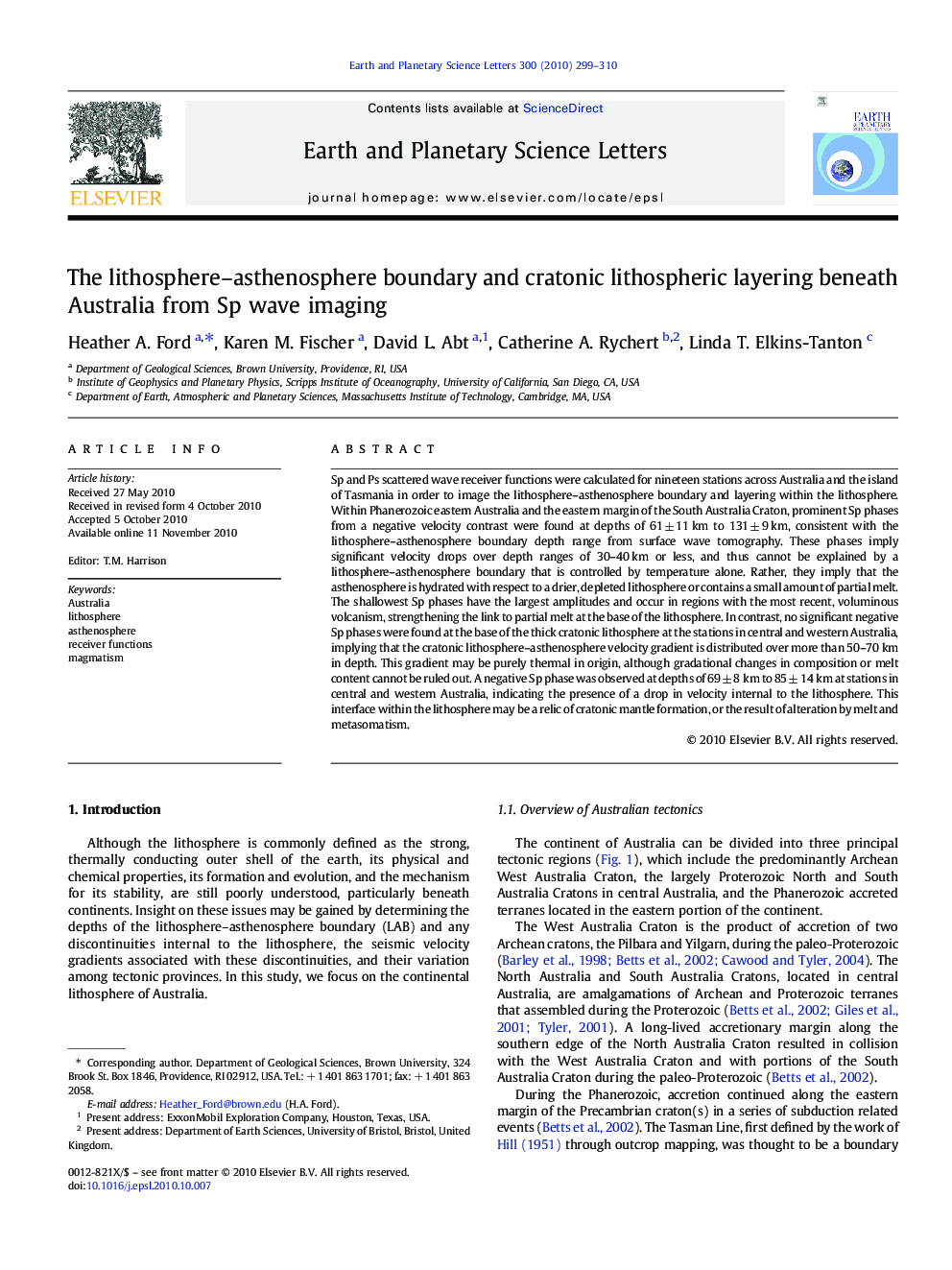| کد مقاله | کد نشریه | سال انتشار | مقاله انگلیسی | نسخه تمام متن |
|---|---|---|---|---|
| 4678159 | 1634839 | 2010 | 12 صفحه PDF | دانلود رایگان |

Sp and Ps scattered wave receiver functions were calculated for nineteen stations across Australia and the island of Tasmania in order to image the lithosphere–asthenosphere boundary and layering within the lithosphere. Within Phanerozoic eastern Australia and the eastern margin of the South Australia Craton, prominent Sp phases from a negative velocity contrast were found at depths of 61 ± 11 km to 131 ± 9 km, consistent with the lithosphere–asthenosphere boundary depth range from surface wave tomography. These phases imply significant velocity drops over depth ranges of 30–40 km or less, and thus cannot be explained by a lithosphere–asthenosphere boundary that is controlled by temperature alone. Rather, they imply that the asthenosphere is hydrated with respect to a drier, depleted lithosphere or contains a small amount of partial melt. The shallowest Sp phases have the largest amplitudes and occur in regions with the most recent, voluminous volcanism, strengthening the link to partial melt at the base of the lithosphere. In contrast, no significant negative Sp phases were found at the base of the thick cratonic lithosphere at the stations in central and western Australia, implying that the cratonic lithosphere–asthenosphere velocity gradient is distributed over more than 50–70 km in depth. This gradient may be purely thermal in origin, although gradational changes in composition or melt content cannot be ruled out. A negative Sp phase was observed at depths of 69 ± 8 km to 85 ± 14 km at stations in central and western Australia, indicating the presence of a drop in velocity internal to the lithosphere. This interface within the lithosphere may be a relic of cratonic mantle formation, or the result of alteration by melt and metasomatism.
Research Highlights
► Sp waves image the lithosphere–asthenosphere boundary (LAB) in eastern Australia.
► Modeling shows that the eastern Australia LAB is not solely due to temperature.
► No LAB is imaged in central/western Australia, consistent with a thermal boundary.
► A mid-lithospheric discontinuity (MLD) is observed in central/western Australia.
► The MLD in central/western Australia may be due to craton formation or evolution.
Journal: Earth and Planetary Science Letters - Volume 300, Issues 3–4, 1 December 2010, Pages 299–310